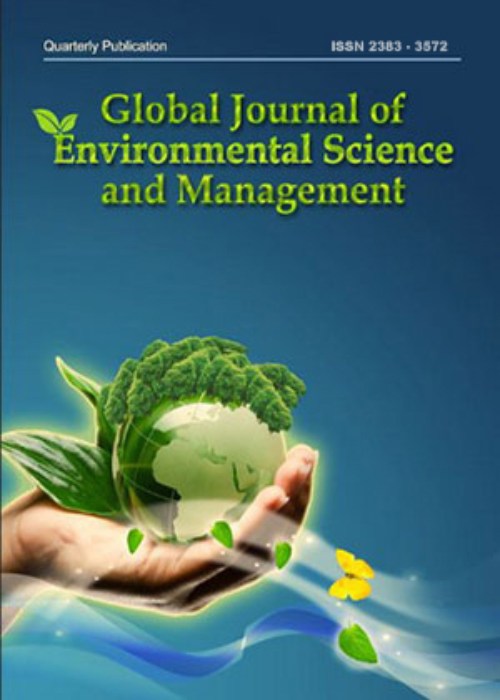Bioenergy potential of Chlorella vulgaris under the influence of different light conditions in a bubble column photobioreactor
Author(s):
Article Type:
Research/Original Article (دارای رتبه معتبر)
Abstract:
BACKGROUND AND OBJECTIVES
Recent investigations indicated that continuous use of fertilizers and pesticides in agricultural fields not only deteriorated soil health but also caused a deleterious effect on surface and groundwater bodies. Treating such wastewater using microalgae has shown higher nutrient removal and biomass efficiency. Moreover, microalgae are proven to be miniature factories that augment the huge potential of biofuel. The aim of this study is to evaluate the different light intensities required for Chlorella vulgaris algae to remove nutrients from synthetic agricultural wastewater in a fabricated bubble column photobioreactor. Additionally, the research findings focus on assessing the degradation of organic pollutants and biomass generation under different light conditions.METHODS
In this study, synthetic agrochemical wastewater was treated in a bubble column photobioreactor with blue, red, sunlight, and white light conditions. The treatment was conducted in a batch process with a hydraulic retention time of 21 days, using light intensity of 1800–2800 luminescence and a temperature maintained at 25–28° degrees Celsius.FINDINGS
Under different lighting conditions, the blue light condition exhibited a higher biomass concentration of 3.99 gram per liter, with an estimated heat energy value of 1.278 kilojoule per liter. Moreover, in the blue light condition, scanning electron microscopy analysis showed no significant changes in the shape of Chlorella vulgaris and energy-dispersive X-ray analysis elemental composition exhibited the lowest oxygen-to-carbon ratio (1.03). Fourier transform infrared spectroscopy was used to illustrate the functional group of microalgae under different lighting conditions. The lipid, protein, carbohydrate, and amino acid contents were 3329–3332, 2116–2139, 1636–1645, and 545–662 per centimeter, respectively. The higher biomass potential from the wastewater treatment shows significant benefit in terms of feedstock and biofuel production.CONCLUSIONS
The present investigation identified the nutrient reduction and biomass productivity to be more in blue light condition for Chlorella vulgaris algae. The investigation also assessed the potential of lipid, carbohydrate, and protein content in Chlorella vulgaris, which indirectly evaluates the biofuel potential of the species.Keywords:
Language:
English
Published:
Global Journal of Environmental Science and Management, Volume:9 Issue: 4, Autumn 2023
Pages:
789 to 804
magiran.com/p2556272
دانلود و مطالعه متن این مقاله با یکی از روشهای زیر امکان پذیر است:
اشتراک شخصی
با عضویت و پرداخت آنلاین حق اشتراک یکساله به مبلغ 1,390,000ريال میتوانید 70 عنوان مطلب دانلود کنید!
اشتراک سازمانی
به کتابخانه دانشگاه یا محل کار خود پیشنهاد کنید تا اشتراک سازمانی این پایگاه را برای دسترسی نامحدود همه کاربران به متن مطالب تهیه نمایند!
توجه!
- حق عضویت دریافتی صرف حمایت از نشریات عضو و نگهداری، تکمیل و توسعه مگیران میشود.
- پرداخت حق اشتراک و دانلود مقالات اجازه بازنشر آن در سایر رسانههای چاپی و دیجیتال را به کاربر نمیدهد.
In order to view content subscription is required
Personal subscription
Subscribe magiran.com for 70 € euros via PayPal and download 70 articles during a year.
Organization subscription
Please contact us to subscribe your university or library for unlimited access!


